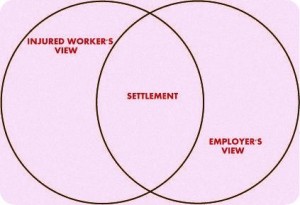
Negotiations can founder when parties (and some mediators) don’t know the tricks that remove settlement obstacles.
Structured Settlements
Structured settlements are ideal for funding Medicare Set-Asides. Structured settlements provide tax-free periodic payments over a specified period of time, which can be for the life of the injured worker. The structure costs less than lump-sum funding, freeing up the balance of the employer’s authorized settlement amount for the injured worker’s other needs. What’s more, unlike with lump-sum funding, lifetime payments cannot be exhausted. The injured worker receives the amount paid by the employer plus income earned from professional investment management. This trick can help bridge a negotiation gap.
From time to time I hear that a structured settlement broker was not called in order to avoid expense. This reflects a fundamental misunderstanding of how structures work. There is no cost to consult a structured settlement broker. The structured settlement life insurance company (not any party) pays the broker a commission if a structure is placed.
A structured settlement is not the right choice for every case. But workers compensation professionals should always investigate this no-risk option.
Special Needs Trusts
Many injured workers and their families rely on Medi-Cal for their non-industrial medical needs. However, receipt of a large sum pursuant to a Compromise & Release can disqualify the injured worker’s entire family from receipt of these benefits until funds are spent down. Placing settlement funds in a Special Needs Trust allows the injured worker to retain public benefits and still C&R the claim.
Pooled Special Needs Trusts are similar to an attorney trust account in that the trustee pays expenses from a fund holding money for many participants. Compared to a single-beneficiary trust, pooled special needs trusts are inexpensive and quick to set up and administer.
Professional MSA Administration
Did you know professional MSA administration which protects the injured worker’s continued access to Medicare benefits is available for little or no cost? One of the biggest faults of the Medicare Set-Aside system is its reliance on self-administration. Administration mistakes can jeopardize the injured worker’s continued access to Medicare.
Injured workers are more often laborers than MBA’s. Determining which expenses are Medicare-eligible is complicated and requires constant vigilance as policies change. To retain benefits, the MSA beneficiary must submit an annual report, a burden many injured workers cannot handle. Knowing who to call to obtain free or low-cost professional administration, including reporting, can mean the difference between an open claim and a Compromise & Release.
Reversionary Trusts
The reversionary trust is probably the least used settlement trick. When parties disagree about future medical needs, a reversionary trust can satisfy both sides’ interests. A reversionary trust can pay for claim-related medical expenses over a specified time. If the money is not needed, at the conclusion of the trust the money reverts to the payer.
Some adjusters object that there is no way to account for refunded amounts without leaving the claim open. Applicants may balk at the lack of unfettered access to trust funds. I had one case where the prospect of a reversionary trust caused the claimant to reduce the demand on condition the money was paid in cash now; the case promptly settled.
With the right parties, a reversionary trust is a solution which allows everyone to be right. Or just raising the possibility can get parties to settle.
There Are Many More Tricks
Every workers compensation professional in the process from Notice of Injury to Compromise & Release has a distinct role. If you are considering closing the claim, it’s time to bring in the person whose focus is settlement, a knowledgeable mediator.









